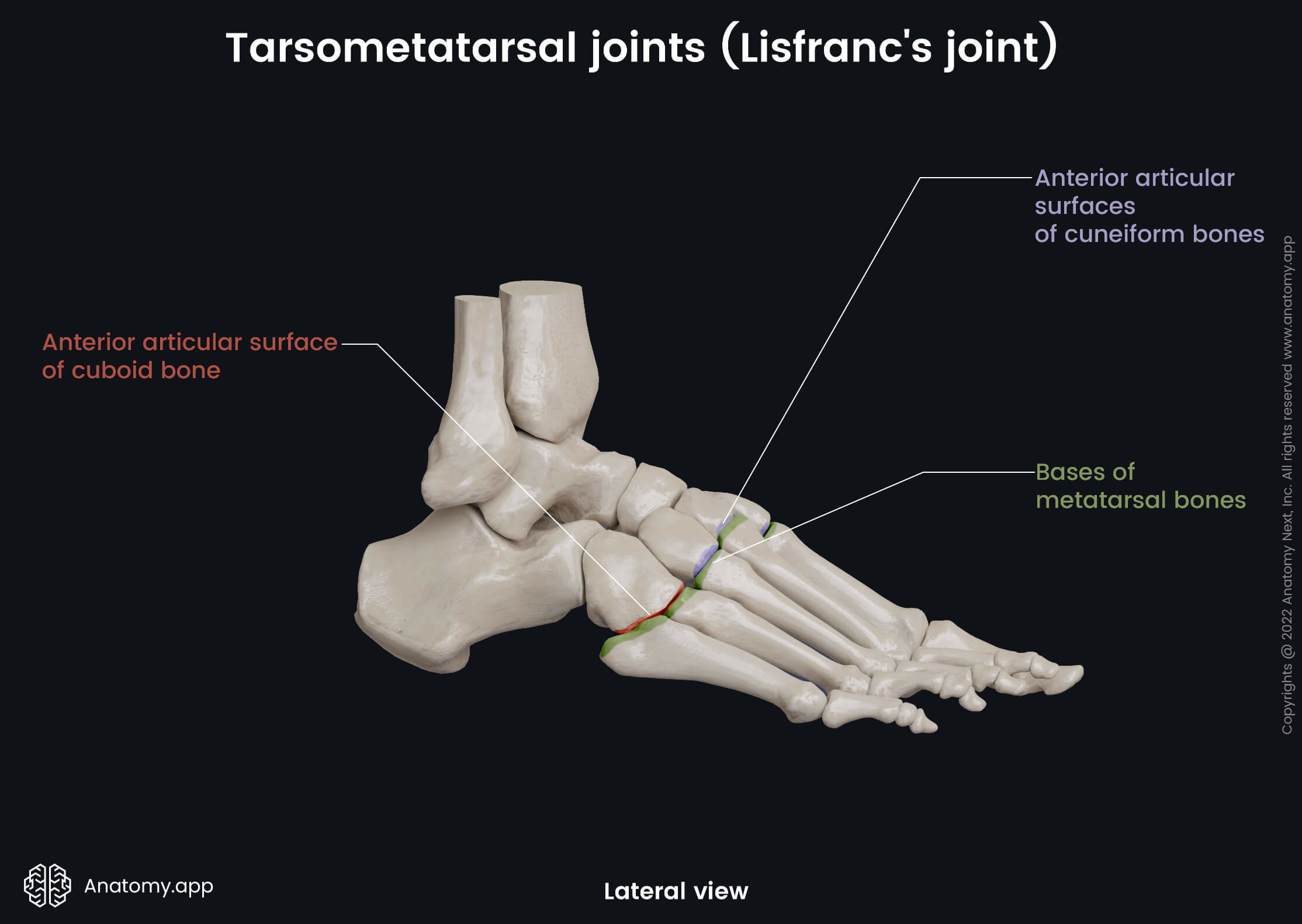- Anatomical terminology
- Skeletal system
- Joints
- Classification of joints
- Joints of skull
- Joints of spine
- Joints of lower limb
- Joints of pelvis
- Hip joint
- Knee joint
- Tibiofibular joints
- Joints of foot
- Muscles
- Heart
- Blood vessels
- Lymphatic system
- Nervous system
- Respiratory system
- Digestive system
- Urinary system
- Female reproductive system
- Male reproductive system
- Endocrine glands
- Eye
- Ear
Tarsometatarsal joints (Lisfranc's joint)
The tarsometatarsal joints (Latin: articulationes tarsometatarsales) are three synovial plane type joints located in the foot. These articulations are formed between the most distally located tarsal bones (cuboid, lateral cuneiform, intermediate cuneiform and medial cuneiform) and the metatarsal bones.

The set of tarsometatarsal joints is also known as the Lisfranc's joint, named after the French surgeon Jacques Lisfranc de St. Martin. The Lisfran'c joint line is located between the tarsals and metatarsals, and it permits the mid-foot amputation.

Articulating structures of tarsometatarsal joints
The tarsometatarsal joints consist of three isolated joints that involve the cuboid bone, three cuneiform bones and metatarsal bones. The first metatarsal bone articulates with the medial cuneiform bone. The second and third metatarsal bones - with the intermediate and lateral cuneiform bones. But the fourth and fifth metatarsals articulate with the cuboid bone. The articular surfaces of the tarsometatarsal joints are as follows:
- Anterior articular surface on the distal aspect of the cuboid bone
- Anterior articular surfaces on the distal aspects of the cuneiform bones
- Bases of the metatarsal bones

Joint capsule and ligaments
The tarsometatarsal joints are embraced by a fibrous joint capsule. Besides the capsule, the joints are stabilized by the following ligaments:
- Dorsal metatarsal ligament - connects the metatarsals with the cuneiform and cuboid bones on the dorsal surface of the foot;
- Plantar metatarsal ligament - links the metatarsals with the cuneiform and cuboid bones on the plantar surface of the foot;
- Interosseous cuneometatarsal ligaments - these are the strongest ligaments of all; they connect the cuneiform bones with the metatarsals.
Movements of tarsometatarsal joints
The range of movements provided by the tarsometatarsal joints is limited. These articulations allow only slight gliding movements (flexion and extension at the level of the joints).